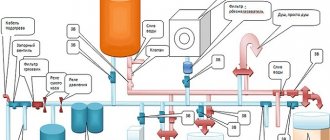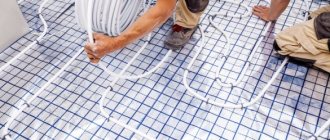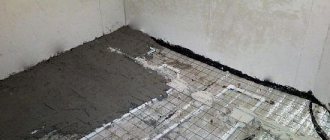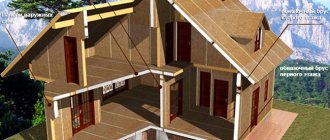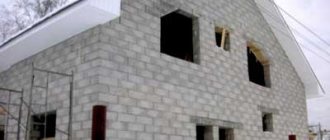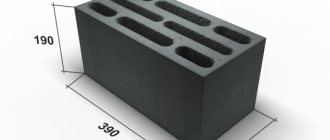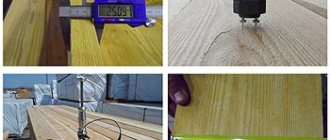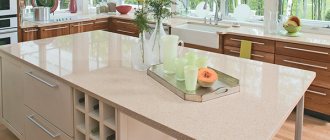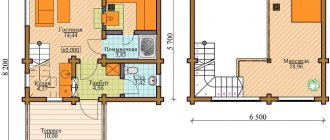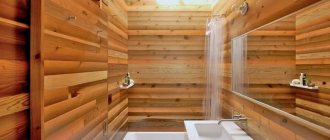Pine is a controversial coniferous crop. There are many enthusiastic and not very good reviews about it. But despite this, pine continues to be actively planted in dacha, house and even garden plots. And it becomes one of the most striking elements of the landscape. Why? To do this, you need to know the pros and cons of pine on the site. By comparing the advantages and disadvantages, you can easily make a decision in favor of such a culture near your home.
Spruce on the site. Advantages and disadvantages.
Is it worth planting a spruce on your site?
Are folk sayings about misfortunes caused by spruce true? Is it really better to avoid planting a tree, or is it all just superstition? Understand the essence of frequent statements about the harm and negativity emanating from the Christmas tree. Find out about the features of the spruce root system and what should be observed when planting it. Among the owners of private sectors, village plots, their own vegetable gardens and dachas, there is a widespread opinion that spruce has no place in the yard, and planting it at all is a bad omen; this undoubtedly results in loneliness, childlessness, death itself and other misfortunes. Let's get to the bottom of it.
In ancient times, such a superstition about the misfortune of the one who planted a spruce was first noticed among the Slavs and Europeans. They connected the life of a tree with the life of a person, symbolizing their strength and luck in it. However, we are interested in the objective side of the issue.
Disembarkation time
Photo: gardenmyths.com/
Conifers can be planted in spring and autumn. Experts recommend rooting older plants that have already overwintered in winter. However, spring planting is preferable for all plants. Over the summer, the new plant will adapt and the roots will begin to work.
If the root system is open, the seedling should be planted as soon as the soil in the hole thaws. It has been prepared and seasoned since the fall. The bedding is kept warm. Early planting with protection from return frosts will allow the bushes to adapt before the onset of heat.
Autumn planting is associated with the fulfillment of a number of conditions related to the characteristics of evergreens. Biological processes in them continue until late autumn. Roots and needles work.
- Planting in September a seedling that obviously continues to grow. Its roots are alive and growing; the crop must be planted with the utmost care.
- October, November - complete uncertainty about the condition of the plant. You can plant it, but it is unknown whether the tree will wake up in the spring.
Therefore, experts advise planting conifers in the spring.
Is spruce really so “dangerous” and why?
The esoteric aspect of this belief is that the bodies of the deceased were covered with spruce, which is why the connection between the tree and death arose. The scientific justification is that it is really dangerous to plant spruce next to wooden or low houses with a stove. The first is explained by the fact that this tree is easily ignited, its ability to ignite from the slightest spark (and in lightning weather this is especially dangerous, because, as we know, a Christmas tree is a tree of considerable stature). The second is explained by the fact that in strong winds, a tall spruce can cover the stove pipe, causing fatally harmful gases to accumulate in the pipe, then escaping into the house itself - the owners can simply get burned.
What to consider when planting spruce? Features of the spruce root system.
When planting a Christmas tree on your site, it is undoubtedly better to take into account the characteristics of the plant, in particular the characteristics of the root system. The roots of the Christmas tree clearly spread more horizontally than vertically (you can often see fallen spruce trees in the forest due to strong winds, since the tree is strengthened in the loose surface layers of the soil). This root system is large in area. It needs a large amount of nutrients, so you should not plant anything next to the spruce within a radius of about 4 meters.
Based on these points, norms for planting distances for spruce from various buildings have been derived:
Planting pit
A planting hole of the required size is prepared in advance, the soil must settle, and the soil around it must settle. After filling the drainage layer with large, medium and fine-grained components, the hole is half filled with the nutrient mixture. The width of the hole should not be excessive. The plant takes root in a coma of earth - a palm should pass between it and the walls (approximately 12-15 cm)
The walls should be vertical, the soil should be loosened and the roots should be removed. Be sure to lay a clay castle on the sandy bottom, then make a drainage fill. But that's not all. If the soil on the site is thin, it needs to be improved within a radius of one meter from the planting hole, adding humus, clay, peat for digging to a depth of 2 shovels.
Is it worth planting Christmas trees on the plot?
There is no need to cut down the spruce, and not only the owners of the site, but also their neighbors can admire the New Year’s garlands and balls.
In recent years, many people decorate not a living, but an artificial Christmas tree for the New Year. But summer residents, gardeners and residents of country houses who have a forest beauty growing on their property have the opportunity to dress it up for the holidays every year.
At the same time, there is no need to cut down the spruce, and not only the owners of the site, but also their neighbors can admire the New Year’s garlands and balls. However, some gardeners believe that other plants do not really like being next to spruce.
We found out from the chairman of the All-Russian organization “Gardeners of Russia” Andrei Tumanov whether this is true and what evergreen plants can be planted instead of the usual, that is, forest spruce.
“It all depends on the size of the plot,” says the expert. If its area is two or three hundred square meters, it is better to choose smaller trees.
Common heather
The leaves of the plant can be yellow, bronze, green, silver and orange. When flowering, heather makes an indelible impression: the branches are covered with many inflorescences, which consist of glass-shaped flowers - pink, purple, white, cherry. After drying, they stay on the bush for a long time.
Heather loves slightly acidic soil. It benefits from mulching with pine needles and pieces of bark, which makes the proximity to pine trees justified..
In what areas can spruce be planted?
According to Tumanov, the main disadvantage of spruce is the large shadow it provides. Therefore, it will not be possible to create beds next to this tree. “If you grow something under the tree, nothing will grow there. There is a Russian proverb: “It’s good to get married in a birch forest, to pray in a pine forest, and to hang yourself in a spruce forest.” Because the spruce forest is dark,” says the expert.
But if you have a standard summer cottage and you do not devote all the free space to a vegetable garden, then you can find a place for a spruce tree. “Spruce can be planted on the north side of the house; it feels great where other plants do not feel well. For conifers, especially when they are small, light partial shade is better than open sun,” the source adds.
Florist's world
If your site is located in a pine forest, where pines dominate everywhere, then you should choose flowers that can be planted under the pines, because you must admit, the forest is natural, natural and the air is clean, but still, little is missing, and this beauty and pleasure. A corner where we could sit, think or relax on warm summer evenings, and for this we need flowers under a pine tree , and not in separate clumps, but in properly decorated flower beds.
Pines are grown both in small areas and in large ones, as they say - God Himself ordered, because it is not only a beautiful and powerful tree, pine has a disinfecting effect and at the same time fills the air with phytoncides, the bronze bark and bright green needles attract the eye.
So, about the flowers under the pine tree, what to choose and what to plant, but first let’s understand that there is not much shade from pine trees, while in the circle around the trunk there is always coniferous litter, which acidifies the soil, and, consequently, flowers that love partial shade and acidic soil, they will be able to survive near pine trees.
In pine forests, lumbago or sleep grass grows well, they are beautiful in large clumps in early spring, and in the summer there remains carved foliage with a slight pubescence, which is also quite attractive.
The usual round-leaved bell and some types of alpine bell will do. All these flowers do not tolerate transplantation well, but they reproduce themselves magnificently, by self-sowing.
Thyme with kupena, phlox and sedum with sedum will feel great. Succulents and other American bulbs have a place for everything.
Especially during flowering, princelings, petiolate hydrangea or garden hydrangea, girlish grapes will look beautiful, which in the fall will change their color to purple-red, which looks amazing against the background of the trunk!
For heather plants, m and erica will be an ideal place under a large pine tree; it will also be successful for rhododendrons; needles generally have a positive effect on the growth and flowering of these plants. Azaleas and gorse also feel great under pine trees, and another plus is that you don’t have to mulch the planted plants, everything is already ready - right down to the planting soil, because these plants just need soil with an acidic reaction.
Do spruce trees suppress other plants?
Tumanov says that spruce trees absorb potassium, phosphorus and other nutrients from the soil no more than other trees, and even less than fruit trees. “All plants compete with each other to some extent if they grow side by side: one can suppress the other. This is normal for a six-hundred-acre garden and will not lead to large losses for the crop or plant growth,” the expert believes.
Conifers secrete a large number of phytoncides: substances that kill or inhibit the growth of microorganisms. “Even if it somehow has a negative effect on some other plants, the negative effect is maybe five percent,” notes Tumanov.
How to buy a healthy seedling
Conifers with bare roots are difficult to take root. Therefore, it is better to purchase a seedling in a container. Small seedlings are similar to each other. You need to choose from three-year-olds. They have the shape and color of the needles of an adult tree. Fir and pine are planted in a permanent place after 5 years, and larch should grow for 4 years.
It is better to buy a coniferous tree at a nearby nursery or store that sells seedlings. At market stalls, there is a high risk of purchasing a low-quality bush. Already dead, the tree retains its bright green needles for more than a month.
What is the advantage of spruce trees on the site?
Spruce trees perfectly purify the air and fill it with a pine aroma. In addition, they remain green all year round and are an eye opener in winter. “It is no coincidence that government institutions, sanatoriums and hospitals are planted with evergreen plants. This is good for health and for the eyes,” says Tumanov.
In addition, ate are quite unpretentious in care. They do not require special watering, tolerate drought well and can grow in soil with a low humus content. The expert warns that spruces grow slowly, so you shouldn’t take too much care of them. It is not at all recommended to dig up the soil around these trees, because many conifers have a shallow root system that can be easily damaged with a shovel or pitchfork.
Another advantage of spruce trees is that their needles do not fall off in large quantities, and they do not need to be removed, unlike leaves. “The needles of spruce trees fall off during the growing season in small quantities and rot quite quickly. It is in spruce or pine monoforests that a substrate of needles is formed, which do not have time to rot. But there this happens because there is no biocenosis of different species that process needles. There are no problems with them in the garden,” warns Tumanov.
Cowberry
These cheerful bushes adore natural coniferous dry forests. They can also be found in peat bogs. Lingonberry reaches a height of 30 cm, it has thick leathery leaves, white flowers with a faint odor. Berries are up to 8 mm in diameter, with a shiny surface.
It is not difficult to grow lingonberries in the garden; you just need to choose a suitable place for it, remove some of the soil and add peat to the ground. This plant reproduces by seeds.
FIRE IN THE GARDEN: PROS AND CONS
There are always heated debates around planting spruce on a personal plot. Let's try to figure it out together: is it worth it or not to plant a spruce on the site?
The mystical side of the issue.
Many people believe in the belief that spruce is not a good tree to plant in a garden plot. They say all the troubles will be directly related to the fate of the tree itself and its height. Some believe that the evergreen tree is a guide to the other world. Even on special professional websites and forums, this issue is actively discussed. It's up to you to believe it or not. I can tell you from experience that after planting several trees, I didn’t notice any anomalous phenomena. Therefore, before planting spruce, proceed from purely pragmatic considerations.
Spruce in the garden plot: disadvantages
- shallow root system, high risk of a tree falling on a house or person during a hurricane, which are becoming commonplace;
— growing spruce takes a long time; it’s easier to buy germinated seedlings;
- if you plant spruce, then you will not expect any harvest, since spruce absorbs a huge amount of moisture and nutrients;
- tall spruce trees provide wide shade; they should be planted away from the neighbor’s property;
— decorative types of fir trees should be planted on a plot whose height does not exceed 3 meters;
- if you have huge thickets of spruce forest, then walking through it for a long time is harmful
Spruce in the garden: advantages
-opportunity to decorate a Christmas tree on the site for the New Year;
- spruce is an evergreen tree that can provide an interesting landscape all year round
— spruce produces specific odors that ticks do not like;
- fir trees can be used to form a beautiful hedge that literally protects you from entering the site;
- spruce produces phytoncides, which have an extremely beneficial effect on the overall health of the body, but long-term stay in a spruce forest can be harmful;
- drains well if it’s lowland;
- excellent and healthy jam is made from Christmas trees
How to choose a spruce for planting
— buy from trusted nurseries, according to real reviews from the Dacha in the Moscow Region group;
- the root system must be completely in the ground and white roots must be visible, signaling root activity;
- if the roots are thick and the earthen lump does not hold, then the roots have been cut off and such a tree has little chance of germination - substandard;
— choose two-year-olds for boarding;
- should be planted in well-lit places;
— purchase special fertilizers along with the spruce
How to choose a planting site for spruce in the country
Celebrating many holidays at the dacha has become a real tradition for most summer residents. Celebrating the New Year at the dacha has become a particularly fashionable trend.
The place for a luxurious spruce must be chosen with the expectation that it can be used as a New Year's tree. And if you focus on the festive role of the tree, then it must be positioned so that it is clearly visible from anywhere in the garden. You can also think about LED lighting and install the electrical wiring in advance.
Proper handling of the Christmas tree.
Remember the simple truth that you cannot put a star on a living, growing Christmas tree, otherwise you will damage the crown and in the future several tops may form.
Do not hang garlands on the spruce (use only LED ones), as any heating of a dormant spruce is harmful.
Shrubs
The decorative quality of pine will be emphasized by the contrast with flowering and fruit-bearing shrub plants. The principle of choosing a suitable variety is the same - the crop must adapt well to slight shading and acidic soil. Larger species can more easily tolerate unfavorable environmental factors. It is necessary to take into account the variety and size of the coniferous species itself.
The culture should adapt well to light shade and acidic soil.
Under the pine tree you can plant:
- underbel;
- lingonberries;
- common heather;
- wintergreen;
- rhododendron;
- wild rosemary;
- Erica;
- juniper;
- barberry;
- rose hip;
- blueberries
Rhododendrons belong to the Ericaceae family, often represented by shrubs and shrubs, many are poisonous. The variety Rhododendron aureum - golden - grows as a bush 30-60 cm high, sometimes 100 cm. The branches are dark brown, pressed to the ground, slightly raised. Young shoots and petioles are covered with short fluff. The leaves are elliptical in shape, slightly curled down at the edges, measuring 2.5-8 cm by 1-2.5 cm. The upper surface of the leaf blade is shiny, dark green, the lower surface is pale. In May - June it blooms with golden-yellow, wide funnel-shaped flowers with dimensions of 2.5-3 cm by 4-5 cm. The inflorescences are similar to an umbrella, located at the ends of the shoots.
Rhododendrons are often represented by shrubs and shrubs, many are poisonous.
Many types of juniper are light-loving, most are drought-resistant, undemanding to the composition of the soil, but prefer light and nutritious. The coniferous evergreen purifies the air and is used to create small groups, tapeworms, cover and secure slopes. Blueberry is a shrub 0.1-0.5 m high. The branches extend from the stems at an acute angle. The ovoid leaves are arranged spirally, finely serrate along the edges, pointed at the apex, and fall off by winter. It blooms in May with greenish-white flowers and bears fruit with black berries with a bluish tinge. Looks beautiful under a pine tree.
Blueberries bloom in May with greenish-white flowers and bear fruit with black berries with a bluish tinge.
Marsh wild rosemary needs high humidity; it is an evergreen erect shrub 0.5-0.6 m high, occasionally 1.2 m. The stems are recumbent, erect, and capable of taking root. The shoots are pubescent, rusty in color. The flowers appear in May, grow on thin stalks, have white, less often reddish petals, and are characterized by a strong, intoxicating odor. In July–August, the fruits ripen in the form of an oblong elliptical capsule 0.3–0.8 cm long.
Ledum flowers appear in May, grow on thin stalks, have white, less often reddish petals.
Blue spruce on the site: bad omen and interesting facts
Blue spruce is a popular coniferous plant that is most often found in central Russia. It is valued for its decorative, beneficial and healing properties, which is why it adorns city parks and squares.
However, there are many signs and reasons why you should not plant a blue spruce in your yard. To understand whether it is worth keeping ephedra on your property or not, you need to understand this issue in detail.
Features of growth under a pine tree
Experienced gardeners practice growing pine trees in both small and large areas. This beautiful and powerful tree has a disinfecting effect, filling the air with phytoncides.
When thinking about what to grow in the garden under a coniferous tree, you need to consider the following factors:
- Shading created by a branched part of a tree. Plants that love partial shade will be able to survive near pine trees.
- A dense carpet formed over time by falling pine needles, which is not to the liking of all cultures.
- High levels of soil moisture caused by fallen pine needles.
- Increased soil acidity. In the area around the tree you can constantly observe pine litter, acidifying the soil. Therefore, near the pine tree it will be comfortable for plants that prefer acidic soils.
Why is it considered wrong to plant Christmas trees on the property and near the house?
The ancestors considered the coniferous culture gloomy, taking away the vitality and happiness of the residents. For some, it became a harbinger of loneliness, childlessness or death. This position became for them the fundamental reason why it is impossible to plant coniferous trees on the site, relying on signs.
The fears of our ancestors are a powerful argument for modern times. Gardeners have identified several reasons why it is still impossible to plant young spruce to decorate the area near the house:
- Height of coniferous crops. It reaches 25-30 m. The spruce touches power lines, and its massive roots destroy communications and foundations.
- Weak root system. A strong gust of wind can cause a tree to fall and destroy a residential complex.
- Instability to fire. The slightest spark on a dry, hot day can burn a spruce, so you should not have a barbecue near the tree or dispose of debris.
Distances between pits
Plants should be located freely, holes are dug according to the established pattern. If the plantings are single, the tree will be tall; leave 1-3 meters free along the radius.
When placing a large plant, it is necessary to ensure that its roots, as they grow, do not damage the foundation, and the shadow from the crown does not interfere with other plants. It is practiced to plant conifers in a flowerbed, when the tallest plant is placed in the center, and low or dwarf shade-loving bushes are planted under its canopy.
A hedge of cypress, thuja, and yew can be planted every meter, alternating plants. Along the alley, the plantings are scattered, interspersed with deciduous shrubs and flowering ground covers.
Superstitions with spruce and their meaning
According to superstitions and signs, there are several reasons why most people cannot plant pine trees and Christmas trees on their plots. However, they are all exclusively negative.
If cut down or uprooted
Out of ignorance, the ancestors tried to get rid of the spruce as quickly as possible. So they wanted to protect their family from harm. But they did not take into account that the spruce is the personification of the owners. According to signs, this is the main reason why you cannot plant a Christmas tree near the house and in the yard. Damaging or cutting down a tree can cause injury to a person's lower extremities. The ancestors did not plant blue spruce on their property to avoid problems in the future.
If planted near the house
The house is a symbol of life, strength, energy, and the blue spruce is the personification of loneliness, suffering and death. Therefore, planting pine, fir and other coniferous trees on a private plot is a bad omen. This will lead to:
- I'll move. The sign is unpopular among the people. According to people, everyone who planted a Christmas tree in the yard moved to a new place after 1-2 years.
- Childlessness. According to legend, a woman who had a Christmas tree on her property became infertile. For this reason, young families were not allowed to plant a tree in their yard.
- Of death. Sometimes the planting of a tree and the loss of a person are just a coincidence. But, according to the ancestors, it was the spruce that provoked death.
Scientific explanation of omens Many people do not believe in omens. They are skeptical about superstitions and are trying to find a scientific explanation why the beautiful blue spruce on the site is considered by the people to be a bad omen.
Bioenergy of conifers
Not all coniferous trees have negative energy. The following types are worth considering:
- Spruce. Has the heaviest energy. Not every person is able to get used to it. A tree suppresses life around it, regardless of its type. To avoid this, you need to establish contact with the spruce. Then her energy will become positive. It all depends on the person. When thinking about whether it is possible to plant a fragrant Christmas tree in a garden plot according to folk signs, also remember about the energy of the tree.
- Pine. The tree is rarely found on private lands. Because of this, questions arise about whether it is possible to plant a perennial pine tree in the yard of a private house, relying on signs. Ephedra gives calm and harmony, restrains negativity and aggression, so creative individuals can take a closer look at it.
- Juniper. The low-growing shrub is a source of healing energy. It affects not only humans, but also other plants. Flowers and other crops grow well next to it.
- Larch. Relieves fears, depression and melancholy. Ephedra calms and gives hope for the future. He shares his positive energy with a person.
- Cedar. Represents fortitude and strength. Energetically, this is a strong tree that gives a positive charge. You can walk in the cedar forest for hours and get a surge of energy.
- Fir. Ephedra normalizes mental state, restores strength, motivates and gives inspiration. The tree's resin can be used to treat various diseases.
What to plant next to coniferous plants?
Nowadays there is practically nowhere without conifers. Thanks to their diversity and unpretentiousness, they have firmly taken a place in our hearts and gardens. They are used everywhere in large and small groups and flower beds. With their help, the volume, height and depth of mixborders (its structure) are set. But, despite all their splendor, you will want to get rid of the monotony and add bright colors to your flower garden. What kind of perennial garden plants can be planted next to your favorite conifers? After all, being in such a neighborhood, they will have to endure varying degrees of shading, acidic soil, and insufficient or, conversely, excess moisture. Choose the same perennials for your neighborhood with architectural conifers - the neighborhood must be worthy. Plants should emphasize and support each other. Inexpressive plants that quickly fade and lose their appearance will look simply untidy against the background of conifers.
In the background, you can use types of perennials that will not get lost and will easily cover the empty spaces between the main plants with their monumental appearance and height. Such perennials form dense clumps and are decorative in themselves, even when they do not bloom. They are clearly visible from all sides and even from above. These can be plants such as aconite (blooming from May to September depending on the variety, 50-160 cm in height, poisonous), loosestrife (June-August, 80-140 cm), delphinium (June-September, up to 180 cm), buzulnik (July-September, 150-200 cm), Volzhanka dioecious (June, up to 200 cm), Kamchatka Volzhanka (July-August, up to 120 cm) and various ornamental grasses.
Do you need it?
Let's start with the fact that there are differences between areas. On the traditional six hundred square meters, it is unlikely that anyone would even think of planting oaks and birches, because there is not enough space without them. The idea of your own “miniature forest” usually visits the happy owners of spacious estates, where you can freely place an orchard, a full-fledged vegetable garden, lawns with flower beds, and everything else your heart desires. And if she wanted a pine forest, why not.
If you want to plant trees, and the area allows it, why not.
Just keep in mind that the dictates of the soul are subtle, unsteady and changeable matter. And trees, on the contrary, are quite stable, purely material, and in their adult form reach considerable sizes. Therefore, before doing anything, it is better to think carefully. So that later you don’t have to cut down what’s planted or restore what’s been cut down. Only after making sure that you definitely need it, proceed to action. And I will try, based on experience (mine and others), to suggest what it would be worth thinking about in advance.
After all, on the one hand, trees from the forest in the country are a real plus: beautiful; they do not cause much trouble (unlike various varietal whims); It’s nice to bask in the shade in the summer heat; Such plantings protect from piercing winds, hold back snow in winter, and protect from prying eyes. On the other hand, there are also plenty of disadvantages: the same shadow may one day turn out to be completely out of place; not every cultivated plant will agree to such a neighborhood; an unsuccessfully planted tree can destroy the foundation of a building; every autumn you will have to remove the leaves (unless your choice falls on conifers) ... In general, there is a reason to carefully weigh everything.
Cereals
This group of plants has an amazing ability to fit into any composition. Cereals are divided into annuals and perennials, heat-loving and winter-hardy, low and tall. In most cases they have inconspicuous inflorescences and are valued for their decorative leaves. Low-growing (15-40 cm) varieties are suitable for decorating rocky gardens, rock gardens, rockeries, garden paths, and borders. Medium-sized cereals with a height of 40-90 cm are used to create group plantings and multi-tiered flower beds. Tall species (more than 90 cm) are planted as a background, screen, or screen.
In most cases, cereals have inconspicuous inflorescences and are valued for their decorative leaves.
You can plant cereals under the pine tree and nearby:
- reed grass;
- meadow grass (pike);
- fescue;
- maned barley;
- rye;
- miscanthus.
Ground reed grass in its natural environment inhabits coniferous and mixed forests, so it can be planted under pine trees. It grows in height up to 0.8-1.5 m. The stem is straight, the leaves are green with a blue or gray tint, the flowers are small, collected in large inflorescences up to 30 cm long, appear in May. Reed-like reed grass can grow up to 1.5 m. The leaves are dark green in color, shiny, 0.4-0.7 m wide, covered with grooves, ribbed. It blooms with a long (25 cm), thick, spreading panicle, then the inflorescence contracts. The spikelets are green, sometimes with a pinkish tint.
Reed reed grass can grow up to 1.5 m.
Sheep fescue is found in pine forests. The stems are thin, triangular on top, 30-60 cm high, the surface is smooth or rough. The leaves are long, bristly, thin, sinuous, 0.5 mm in diameter. The panicle is oblong, loose, drooping. The spikelets are elongated or elliptical in shape, light green in color.
To plant or not to plant?
If there are no trees on your site yet, but you really want there to be, you are probably beset by many questions and doubts. Still, to plant or not to plant? And if you plant, then what exactly? And where is better? I have no answers - there are no universal solutions to this matter. But there are some considerations.
Is it worth planting forest trees in your dacha?
Where exactly should not be planted?
To begin with, I propose to narrow the problem by immediately excluding those places where it is, in principle, not worth planting large forest trees. To avoid.
1. Close to home The larger the tree, the more powerful its root system. Tree roots can tear up asphalt and break concrete - such proximity is unlikely to benefit a country house. Well, probable threats should not be discounted: a strong wind or thunderstorm can break a lonely tall tree or uproot it. You can imagine the consequences.
2. Near power lines A small seedling will eventually grow, spread its branches quite widely - and it is in our own interests that there are no electrical wires within the reach of the future tree. The reasons, I think, are clear.
Someday the trees will grow. It’s worth immediately thinking about what and how this might affect
3. Near the garden Even if you have oriented correctly and the shadow from the tree does not fall towards the beds, do not forget about the roots. Which obtain food and water to feed a far from small plant. Why do we need such competition?
4. At the neighbor’s fence Say that you planned the planting according to all the rules, taking into account the distances prescribed by the standards, and discussed the issue with your neighbor - is he okay with it? Still, you should think three times before planting a tall tree near the border with a neighbor’s property.
A small tree near the fence will not hurt your neighbor. But one day it will grow.
Your neighbor's mood may change. Or plans. Or even change neighbors. But the tree will remain. Experience shows that people often quarrel even over apples falling over the fence, or the shadow that the neighbor’s apple tree unsuccessfully casts. There are many more problems with a Christmas tree or birch.
Choosing a place for a plant
The table gives only a general description of the plant’s placement requirements. There are other signs that help you choose the right place. If the needles are variegated or blue, you need to provide partial shade so that the color remains bright and does not fade.
Any dwarf trees should decorate the slopes so that the water drains and the branches do not get wet. Thujas are planted so that they are always in the shade, even in winter. The northern side of buildings or the crowns of tall trees are suitable.
No conifers are planted in the rose garden area. Fir and spruce grow better if there is no cedar or pine in the group. Spruce of the Lorelei variety takes root well on a slope where moisture stagnation is excluded.
Choosing pine for the site
Culture is widely used in landscape design. It is recommended to plant decorative varieties of pine trees on the site. The tree can grow up to 30-40 m in height, losing its beautiful appearance with age. The crown remains only in the upper part, the trunk becomes bare, and the top dries out. For this reason, it is advisable to choose special hybrids for the garden, characterized by their small height and density of branches.
New growth care
During the first five years, plants require care - frequent watering, mulching, weeding, preparing a tree or bush for winter will help a well-groomed conifer grow and shine with beauty. The trees cannot be tolerated if the soil dries out for a long time. Therefore, mulch is necessary.
In the first year of life, seedlings are watered by sprinkling in the evenings and shaded in hot weather. For the first month, the ephedra is watered daily. The more compact the plant, the more often it receives moisture. In early spring, the bark is protected from the sun by whitewashing. In winter, needles can die from sunburn. There are no needles - the root will die - the tree is evergreen. For the winter, protect the roots from frost. Peat and compost are added to the circle. The stem is wrapped in cardboard, the bushes are tied, and protected from the wind.
The first rays of the sun make the needles pale. The roots are still in the frozen ground, and the leaves evaporate moisture. Protective frames should be installed over the bushes as soon as possible. At the same time, you need to help the earth to thaw faster - cover it with a dark film, water it with warm water. As soon as the roots come to life, the screen is removed.
The first year the plants are not fertilized, then special compounds for coniferous plants are used according to the instructions. Manure and humus are given in small quantities. This fertilizer is not for coniferous crops.
Diseases and pests
Despite the fact that pine is a fairly strong tree and resistant to external factors, it can also be affected by parasites and diseases. One of the most common pine diseases is schutte. With this disease, yellowing or red color of the needles is observed, followed by their falling off.
When the first signs of shutte appear, you need to act as follows:
- remove affected branches;
- remove affected needles from the area;
- treat the wood with Bordeaux mixture or sulfur-lime solution.
Another common pine disease is rust, which causes unnatural bending of branches and death of the tops of coniferous shoots. Methods to combat rust include removing affected branches and adding immunostimulants to the soil.
Important! To prevent fungal diseases, it is necessary to periodically spray the tree with antifungal drugs used in organic farming, for example, Fitosporin. Such products do not contain aggressive chemical components and have proven themselves with regular use.
Also, pine is often affected by fusarium, caused by a type of fungus. This pathology is dangerous because it primarily affects the roots of the tree, causing it to gradually dry out. The method of combating fusarium is treating the soil with anti-fungal preparations.
Conifers are also subject to attack by small pests, such as scale insects, scale insects, pine aphids, silkworms, moths, pine beetles, and pine longhorned beetles. Parasites feed on the needles or bark of plants, sometimes damaging the plant to such an extent that it can no longer be saved.
The only way to combat parasites is prevention, which consists of:
- loosening the earth around the pine tree;
- soil disinfection;
- treating trees with insecticides in early spring and late autumn.
Let's sum it up
Some people may be afraid of certain problems when growing pine trees on their property, but they must remember that in garden culture there is no plant that grows on its own. All trees and shrubs require compliance with certain conditions when planting and caring for them during the growth process: watering, fertilizing, loosening, weed and pest control, timely pruning to form a crown. The pine tree on the site will not only provide healthy aromatic air, but will also reward you with positive energy, provide aesthetic pleasure and relieve depression and irritation.
Source: plusiminusi.ru
Botanical description and features
This coniferous tree has many varieties, ranging from Scots pine, which is familiar to residents of Russia, reaching a height of 40–50 m, to creeping varieties used to create landscape compositions. All these plants share common botanical properties - the presence of paired needles of a bluish or dense green hue and ovoid fruit-cones with seeds developing in them.
1 - general view of the tree, 2 - shortened shoot with two needles, 3 - branch with female and male strobili, 4 - female cone, consisting of macrostrobilae, at the time of flowering, 5 - macrostrobilus (a - seed scale with two ovules, b - covering and seed scales), 6 - branch with an overwintering cone (a) and a formed cone (b), 7 - opened mature cone, 8 - male spikelet consisting of macrostrobilae, 9,10 - microsporophyll, 11 - pollen, 12 - lignified seed and covering scales with a thickened apex - a scutellum (apophysis), 13 - lignified seed scales with 2 winged seeds, 14 - a seed with a wing.
The shape of the tree's crown depends on its variety, as well as its location. Thus, in dense coniferous forests, pine, as a rule , has a cone-shaped crown, while in spacious areas it looks more like a spreading umbrella. Pine needles, cones and wood contain essential oil, which is widely used in medicine.
- Medicines made from this substance are used for the following health problems:
- diseases of the respiratory system;
- diseases of the gastrointestinal tract;
- inflammation of the oral cavity;
- dermatological diseases;
- joint diseases.
Unpretentious pines
Pines are light-loving, grow well in open sun, and tolerate partial shade; are drought-resistant, grow well on poor soils and sands, but cannot tolerate stagnant waterlogging.
Unpretentious beauties of pine trees
In plant compositions, pines are harmonious with many sun-loving ground cover plants: saxifrage, aubriet, borage; With red-leaved barberries, spectacular contrasting compositions are obtained.
Pines and barberries
First of all, the forms of mountain pine (Pinus mugo) are unpretentious. We have already talked about two of them ('Gnom' and 'Mops') in the article about dwarf conifers, but here are two more unpretentious beauties.
Mountain pine (Pinus mugo) 'Winter Gold'
Pinus mugo 'Winter Gold'. Photo from the site forumogrodniczeoaza.pl
This golden pine with a hemispherical, squat, unevenly developed crown shape on the sides is very consistent with its name - “winter gold”. Its needles are light green in summer and golden yellow in winter. After 10 years, it reaches a height of about 0.5 m, and a diameter of up to 1 m.
Mountain pine (P. mugo) 'Ophir'
Pinus mugo 'Ophir'. Photo from the site iris.md This is another golden winter beauty (green needles in summer) from mountain pines. The surprisingly regular, rounded shape of the crown becomes somewhat spreading and unequal with age. At the age of 10 years it reaches a height of 0.5 m and a diameter of 1 m.
A wide range of pine trees is presented in our catalog, which combines offers from various online stores. Select pine seeds and seedlings.
Source: 7dach.ru
